Indigenous People and Jamaica’s History
Jamaica’s original inhabitants were Arawakan and Tainos (indigenous people or original inhabitants of North & South America) people and they name the island Xaymaca meaning “Land of Wood and Water.” The Arawakan and Tainos
people were believed to have been related because their languages were similar. They settled on the island between 4000 and 1000 BC. At that time, they had more than 200 villages and each village was ruled by a chief. Christopher Columbus arrived in Jamaica in 1494 and claimed the island from the Spaniard and named it Saint Largo.
The south coast area of Spanish Town was known as Old Harbour. This part of the island was believed to be the most populated section at that time. However, Dry Harbor, which is now called Discovery Bay on the North Coast, is where Columbus was believed to have landed. By 1524, Spanish Town located in the Parish of Saint Catherine was then the capital of Jamaica. To this day, Spanish Town still has the oldest cathedral church in the Caribbean out of all the colonies that once ruled by the British.
The Arawakan and Tainos people were known to be the original people of the island. While the Arawakan and Tainos people were living in their villages, the Spanish Empire was believed to be the first country to have taken over the island and called it Santiago. The Spaniard build homes over the next forty years and settled on the island. They brought slaves to the island to work on their plantations. The Arawak and Tainos people resisted being slaves. They did not want to work on plantations and plant crops, so they deserted their villages and moved to the hills and mountain sides.
Indigenous People and Maroons during Spanish Rule.
After going to the hills, the Arawakan and Tainos people met other runaway slaves already living in the hills. They were former slaves who had escaped from the Spaniard and Portuguese slave owners. These slaves were Maroons. They were descended from the Western Coast of Africa. Together, the Maroons, Arawakan and Tainos people established free communities in the hills. Now the Tainos, Arawakan and Maroons people were living in the mountains as one people and formed the Windward Maroons. The groups existed together, the population grew and the Windward Maroons became stronger as a group.
As time went by, the Maroons were faced with constant attacks from the Spanish Empire. During which, the Maroons continued to increase in numbers as other runaway slaves from different plantations joined them. As their population increase, the Maroons became stronger and more forceful.
British Defeated the Spaniard and Rule Jamaica.
The British came to Jamaica, fought the Spaniard and defeated them. After the British defeated the Spaniard, the Spaniard released their remaining slaves and fled the island. The Maroons population grew larger, now that they were joined by the released slaves. The Maroons continued their rebellious fighting against the plantation owners. By 1655, the British had defeated the Spanish conquest in the Parish of Saint Ann in the town of Ocho Rios. The island was now a British colony and the name was changed to Jamaica. The British now controlled the parts of Jamaica that was once controlled by the Spanish Empire. However, the larger parts of the island mainly the hills were controlled by the Maroons. The Maroons remained the greatest threat to the British. They continued to grow in numbers with ongoing slave revolts from many plantations.
Slave Revolts.
In 1673 there was a slave revolt in the Parish of St. Ann with more than 200 slaves escaping. The Maroons increase in numbers by an additional 400 more slaves who were part of the Clarendon slave revolt from the Parish of Clarendon in 1690. As a result, the Maroons population had multiplied and their groups became much larger. They decided to separate into multiple groups. The main two groups were the Leeward Maroons led by Captain Cudjoe and the Windward Maroons led by Nanny. Because the Leeward and Windward Maroons were growing considerable it was a caused for concerned for the British. In 1728, the British sent more troops to Jamaica hoping to defeat the Maroons.
Nanny and Cudjoe of the Maroons.
Captain Cudjoe was the leader of the Leeward Maroons. Captain Cudjoe was known as a great leader of the Maroons. He was a strong, skilled and courageous leader who refused to be enslaved. He was responsible for freeing hundreds of captive slaves. Of the different Maroon groups, the most notable Maroon groups were led by Captain Cudjoe and Nanny. Captain Cudjoe and Nanny were brother and sister.
Nanny or Granny Nanny as she was affectionately called was also recognized for her leadership and guerrilla warfare skills, just like her brothers. They were born in Ghana, West Africa into the Ashanti Nation and of the Akan’s people. They came to Jamaica as slaves to work on plantations in the Parish of Saint Thomas. The plantation’s main crop was sugar cane. After experiencing how cruel slavery was, they knew they had to escape. Nanny and her five brothers, Cudjoe, Accompong, Johnny, Cuffy and Quao ran away from the sugarcane plantation and seek refuge into the Blue Mountain hills, north of Saint Thomas.
In the hills, they joined other Arawakan, Tainos and Maroons living in communities in the hills. Once the Maroons separated into different groups, they organized and relocated into various locations around the island. Captain Cudjoe went to the Parish of Saint James which was named Cudjoe Town. Accompong settled in The Parish of Saint Elizabeth and his community was known as Accompong Town while Nanny and Quao settled in The Parish of Portland which became known as Nanny Town. Johnny and Cuffy were believed to have stayed with Cudjoe & Accompong respectively. Captain Cudjoe & Nanny strong leadership skills were attributed to their Ashanti Tribe ancestry of Ghana. The Ashanti Tribe was known for their resistance to European in West Africa.
Together, the Maroons fought the British with well organized attacks. The British had superior weapons but the Maroons were much more effective as fighters. Nanny Town was located in high area on top of ridges, making it impossible for any sneak attacks by the British. The Maroon warriors further disguised themselves to blend in with the forest to look like trees & bushes. With the well strategic planning of the Maroons, they were well prepared for the British. Captain Cudjoe was said to rule Jamaica by night while the British rule by day. This was because most of his raids on plantations were done at night. The Maroons continuous raids on plantations and the British fighting went on for another seventy plus years. The Leeward Maroons further united with a group of Madagascar’s population (settlers from the Southeastern coast of Africa) who had survived a slave ship, shipwreck. Together the groups formed a much stronger Maroon Communities.
First Maroon War.
The continuous fighting led to the First Maroon War of 1731. The Leeward Maroons were better prepared to defend against the British troops even though the British had more firepower and were considered the superior power. The First Maroon War fighting continued until 1738. In 1738, the British government recognized that they could not defeat the Maroons in Jamaica. Therefore, the British Government decided to make a Peace Treaty with the Maroons. The British Governor, Sir Edward Trelawney and Captain Cudjoe worked out a satisfactory Peace Treaty in 1738 for the First Maroon War.
In the Peace Treaty 1738, the Maroons were recognized as an independent nation. They were given 2500 acres of land in two different locations. Part of the agreement in the Peace Treaty was that the Maroons did not have to pay any taxes, and they would live under their own chief with British Supervision. In the Peace Treaty of 1738, the Maroons were paid to return runaway slaves. They also agreed to fight for the British in case of any attacks from the Spanish or French Empire. Nanny was believed to have being very dissatisfied with the Peace Treaty. She felt it was still a form of oppression. The ongoing tension between the British and the Windward Maroons led to The Second Maroon War.
Second Maroon War.
In 1739 tension grew between the Maroons and the new British Governor who took power. The tension led to The Second Maroon War. During the second war, The Accompong Maroons in Saint Elizabeth made an agreement with the British to remain neutral in the war. In the second war the British fought with dogs from Cuba to avoid certain attacks and many more troops in the thousands. At the end of the second Maroon War, the Maroons that fought were defeated. Accompong and the Maroons of Accompong Town in Saint Elizabeth were not attack because of their agreement to stay neutral. The Maroons surrendered and agree to sign a second peace treaty. The second Peace Treaty was signed by Quao, Nanny’s brother.
Nanny was still not satisfied with the Second Peace Treaty. Part of the Peace Treaty agreement was that the Maroons had to surrender in three days. Many of the Maroons refused to surrender within the agreed time because they did not trust the British Governor. Because the Maroons delayed surrendering to the British it gave the British all the reason they needed to figure out how they could get the Maroons from Jamaica. At the time, Nanny was married to a Maroon named Adou but there are no records of them having any children.
The Maroons persistence and refusal to be enslaved in our opinion were some of the embedded reasons for Jamaicans mental toughness and proud cultural strength. After her passing, story has it that many Maroons from Nanny Town relocated across the island and united with the Leeward Maroons. Nanny was recognized as a hero of Jamaica in 1976 and was given Jamaica highest honor as the ‘Order of National Hero’. She is the face on Jamaica’s $500 bill.
Maroons sent to Canada.
In 1796, the British sent the Maroons that fought in the Second Maroon War to Canada. They went by ships and sailed from Port Royal Harbor in Jamaica to Halifax Canada. The British used three ships to transport the Maroons. After the first winter in Canada, the Maroons did not fear well in the cold climate.
The British Government decided to send them to Freetown, Sierra Leone in West Africa. The other alternative was to try and convince the Maroons to farm in the cold climate which was not going well health wise.
Maroons shipped to Sierra Leone, Africa.
By the 1800, the Maroons were deported from Canada to Sierra Leone. They lived in Africa and enjoyed a healthy life. But for some Maroons, the only place for them was Jamaica. Sierra Leone was just not their home. The Jamaican Maroons settled in Africa until 1841. After 1841, the majority of the Maroons returned to Jamaica to work for planters who needed people to help with their sugar export. Slavery was abolished in 1834 by the British Empire and the full emancipation was completed in 1838.
Therefore, the Maroons could return to their home land and live as free people. The small percentage of Jamaican that stayed in Freetown Sierra Leone became a part of the larger Creole community. Some folks living in Freetown Sierra Leone today, still proudly claim themselves as descendants of Jamaican Maroons. Today on the main street in Freetown is the Saint John’s Maroon Church built by the Maroons in 1820. The congregations of that church are proud to let people know that they are descendants of the Jamaican Maroons.
Maroons Returned to Jamaica.
The Jamaican Maroons who returned to Jamaica from Freetown Sierra Leone, West Africa, and their roots are still remembered today in Freetown. While the British ruled Jamaica for the first 200 years, Jamaica led the world in sugar export. After slavery ended, the British imported Indian and Chinese workers as indentured servants to help with the work. The indentured workers were like contract workers. They were given transportation, food, clothing and shelter in exchange for their services. The descendants of indentured servants stayed in Jamaica and made it their home.
Blacks in Jamaica had outnumbered whites enormously by the start of the 19th century due to the British dependent on slaves for the work force. Even though England had abolished slavery, some plantation owners continued to smuggled slaves on the island. Laws were put in place by the British Government to help improved the lives of slaves and former slaves. The laws were resisted by the House of Assembly who claimed the slaves were contented with their lives & the British were interfering in island business.
After the ending of slavery in the 19thcentury, the British established the Botanical Gardens in Jamaica. These gardens were well maintained. They replaced some older gardens such as Bath Garden which was the site for planting breadfruit. Breadfruit was brought to Jamaica from Southeast Asia. The name breadfruit came about because after cooking the texture was like bread. In 1872, Kingston became the capital of Jamaica, replacing Spanish Town. Hope Garden in Kingston was founded in 1874 and remained a major tourist attraction.
Jamaican Government and Politics, 19th Century Changes.
By the 1900s, Jamaica continued to gained independence from the British and moved closer to being independent. During the 1920s and 1930s, the working conditions were poor along with social and economic conditions. Two leaders came to the fore front to represent the people of Jamaica. Norman Washington Manley founded the People’s National Party (PNP) and Sir William Alexander Clarke Bustamante founded the Jamaica Labour Party (JLP).
These men were cousins and together, these gentlemen were the voices of the people. They were the voices for the working class and represented the peoples. Both leaders were looking out for the best interest of the Jamaican working class people and identified with the laborer. Both men served as Chief Ministers of Jamaica from 1953 to 1962. First Sir Alexander Bustamante served from 1953 to 1955 for the Jamaica Labour Party, and Norman Manley served from 1955 to 1962 for the People’s National Party.
During those times, Norman Manley chaired the committee that led the negotiation in helping Jamaica gain independence from Britain. As the representative for Jamaica on the Federation of the West Indies committee that was formed in January 1958, Mr. Manley aligned the country with a small group of leaders from other islands. These islands came together to form a federation to create a political team to strengthen their positions in becoming independent countries.
Jamaica Independence and elected Prime Minister.
On August 06, 1962, Jamaica gained independence from British Rule. The elected leader representing the country title was changed from Chief Ministers and now called Prime Minister. The first election held in Jamaica as an independent country was in 1962 and Sir Alexander Bustamante was elected as the first Prime Minister.
The next 10 years following independence, Jamaica’s economic growth was strong. The country’s first three Prime Ministers were from the Jamaica Labour Party. The first Prime Minister Sir Alexander Bustamante served until 1967. Donald Sangster was his deputy and became the second Prime Minister followed by Hugh Shearer who was also a part of Sir Alexander Bustamante’s cabinet and became the third Prime Minister.
The country was growing significantly at an alarming rate annually. This was the result of strong investment in bauxite which is an aluminum ore found on the island and the main source of aluminum. The remaining investments were in tourism, manufacturing and agricultural. The first 10 years following independence led to some growing concerns from the people of Jamaica. The people in the urban communities were feeling a sense of inequality. The people let their voices be heard in 1972 election and voted for the PNP led by Mr. Michael Manley who was the son of Mr. Norman Manley.
Electing Mr. Michael Norman Manley, as Prime Minister of Jamaica meant a new direction for the country. Jamaica’s economy continued to fall despite the effort to create social policies. Throughout the 1980s several problems occurred, which further damaged Jamaica’s economy. The first and third largest alumina company Alpart and Alcoa closed. Then Alcan started producing less alumina. The problems compounded when Reynolds Jamaica Mines, Ltd left the Jamaica industry and a reduction in tourism followed.
Economical gap widen, Population Migration increased.
Throughout the 1990s, the social and economic inequality gap continued to widen. The rich got richer and poor got closer to poverty. The dollar continued its devalued trend in exchanged rate with the United State dollar and the rest of the leading countries. During these times, more and more people continued to migrate to The United Kingdom, United States, and Canada seeking better economical conditions to improve their lives. The migration caused further downfall to the country as some of Jamaica’s best and brightest people migrated. The large massive of Jamaicans living abroad became known as Jamaican Diaspora (scattered people).
Life in Jamaica, Today.
Today Jamaica continues to strive for changes and strong leadership. Like any other democratic country during election, the leadership changes from one party to the next while the people truly hope for real change. However, the people living in Jamaica and the Jamaican Diasporas around the world are still waiting for significant changes.
People are looking for the old fashion leadership which happened once upon a time where Jamaica’s Co-Founders, Mr. Norman Manley and Sir Alexander Bustamante demonstrated. A time when the people of Jamaica social and economic interest came first before any special interest. During those times, the questions the leaders asked were, “What can we do better to improve the lives of the people?”
Jamaica’s infrastructure came a long way with much improved roads. There are housing being built in communities across the island. The crime rates continue to be high in the inner city due in part to a struggling economy, large deportation and a way of life for others. Many Jamaicans have retired in foreign countries. However, many of the retirees’ original plans were to return home for their golden years, but due to high crimes in certain areas, they are afraid to return to Jamaica. The global economy has further impacted Jamaica because of their dependent on foreign investments and tourism. The job market has suffered while minimum wages needs to improve. The island is in a great position to grow as the global economy improves.
Jamaica is building better relationships with other leading countries and the emphasis on education has become a priority with more schools and colleges being built. More tourist accommodations and attractions are being built to complement the beautiful sceneries and beaches on the island. Jamaica is a little country with big ideas which has helped to build brand Jamaica.
Jamaican government recognized the challenges ahead. There are opportunities to aligned and capitalize on the global economy if the right structures are in place. The government must learn from pass mistakes to grow the country. It’s the hope of the people that the next National Hero will come forward and identify themselves with the people of Jamaica. They must recognize the social and economic inequality. They must be willing to make honest changes and put the people’s interest first for a brighter future.
It’s time for Jamaicans around the world to play a more active role for a better Jamaica. How long will we continue to say, “Jamaica Nice” and “Jamaica the Land we Love” then continue to do nothing but expect different results. We need more accountability from each and everyone not just our leaders. Jamaica has being affected in many ways which has contributed to the problems we faced. It’s nearly impossible for any country to survive loosing the talented people Jamaica has lost over the years. But the country have endured all the migrations and continues grow. Now is the time to take action and come together, “Out of Many, One People” to help “Jamaica, the Land we Love.” Jamaica needs commitment from each and everyone to play a role for the betterment of the country. They need Jamaican in foreign countries to help out in their own district and help the schools to help the children. A grassroots approach would serve the country well during the development stages.
On August 6, 2012, Jamaica celebrates its 50th Anniversary. Come to Jamaica or Come back to Jamaica and join the celebration. We are looking for two million additional visitors to come to Jamaica this year. As we moved beyond independence and into the 21st Century keep Jamaica in your heart and in your prayers.
Stand up and be counted!!!


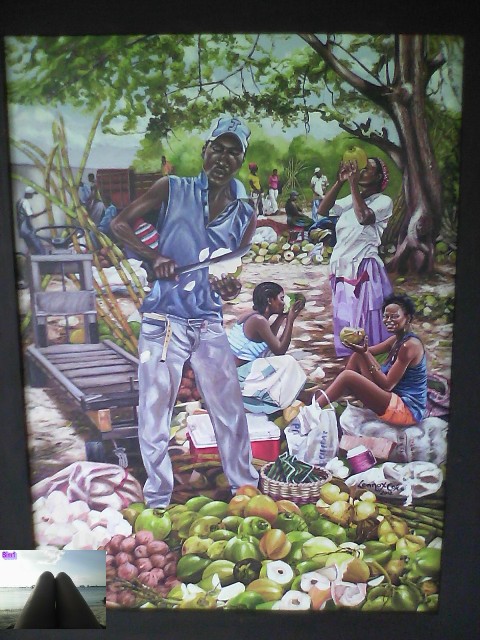

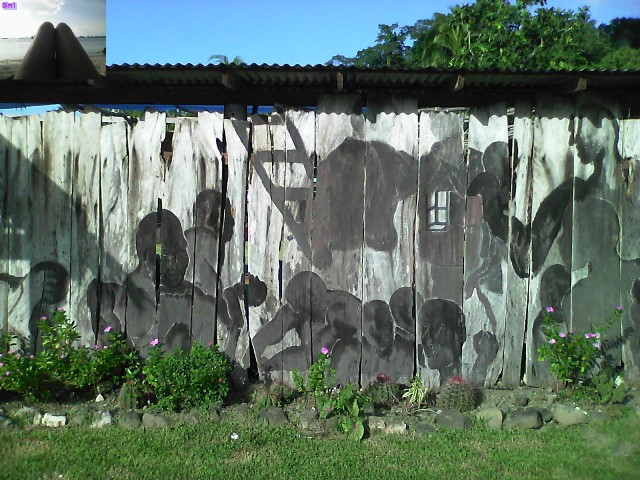
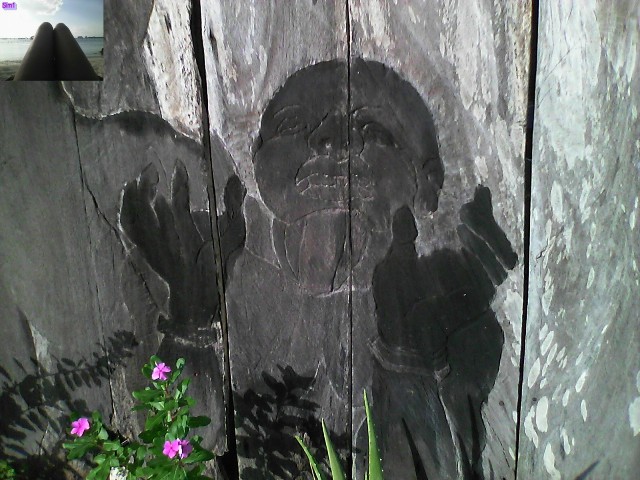

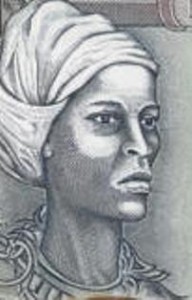


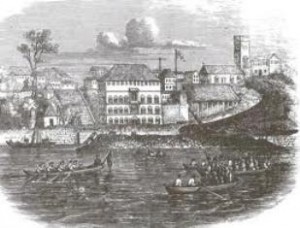
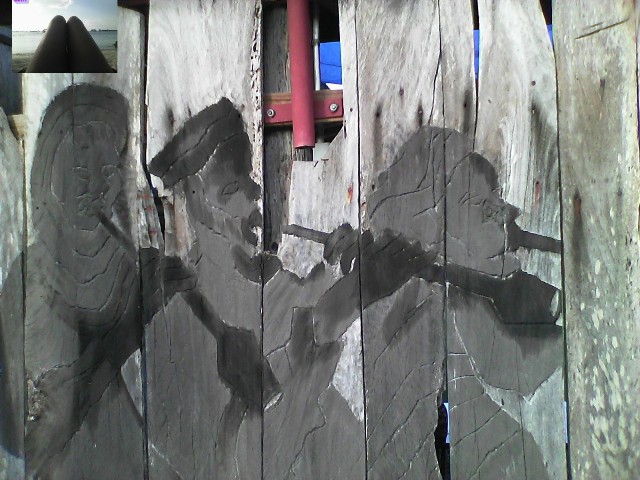




I love the information. It was well researched…lovely paper.
Marvellous content and written concisely, this article deserves high mention for providing an inspirational boost to a reader, such as myself, seeking clarification on the description and history of the Maroons. The British Government would appear to have been badly maligned over it’s efforts at reparation from which the maroons deported from Canada clearly benefited. It is interesting to note that there were those who chose to leave Sierra Leone to return to Jamaica as their homeland. Also the resentment shown by the Planter Class to the British Government’s abolition of slavery and efforts to resettle the people make them appear to be of better quality than the Spanish brutes who were driven by their quest for gold and totalitarian domination over the native Indios’ (as they actually called themselves – not indians). The signing of a peace Treaty with the MAROONS in 1738 suggests higher order thinking in the British Government but given the confusion generated by the warrior spirit of Nanny refusing to adhere to British offer and the dividing of the ways between the major Maroon groups, the question naturally arises as to whether the 2,500 acres of land was handed over in full to the Maroons or whether some of it was held back as Nanny’s group defaulted on the terms of the treaties. Please visit my Facebook BJAIM-CAMPAIGN page for an annual National Taino Day and the recognition of two Taino Heroes at URLwww.facebook.com/lloyd.gordon.520, or link me at qoinstresearch@gmail.com.
Lloyd thanks for the feedback. As mention earlier, at the gathering with Roy T. Anderson, was author and consultant Gloria S. Allen from Sierra Leone. As you can imagine, we talked about Freetown in Sierra Leone where many Jamaican Maroons Ancestors still lives. http://gloriasallen.com/
So while I believe the 2500 acres was handed over to the Maroons in Cockpit County, I will leave it to the experts of whom names I shared. Again, thanks for the visit and I certainly want to know the names of the two Taino Heroes.
A commendable outline written with much valuable content, and without frills: It is both cogent and concise and has helped me to establish swiftly a clarity concerning the definition of Maroon, and the events which surrounded the granting of freedom to the Maroons by the British in 1738. While yet a French Government Scholar in 1972, I was given advanced standing to make my submissions for a Sorbonne University Doctorate dealing with a rare group of Ferns before the statutory date with the proviso that I would study them in Jamaica which has the greatest diversity of Ferns. In so doing I experienced certain things while visiting the mist forests where these ferns thrive which caused me to delve somewhat into the social anthropology of the local residents. This article helps greatly in answering certain questions in this context and is excellent resource material to refer to for my upcoming BJAIM-CAMPAIGN FORUM on Thursday, October 13, 2016 on UWI-Mona Campus for an annual Taino Day, and the recognition of two Taino heroes. If this interests you please link me at my email address below, or visit the campaign page at my Facebook website.
Thanks for the visit Lloyd and your in debt take on the topic of the Maroons. It’s a fascinating part of Jamaica’s history. The Maroons helped the Jamaican people to stay rooted on the journey and understand the past. Interestingly enough, I was with Roy T. Anderson this past weekend. Roy is the director of two documentaries on the Maroons (Akwantu: The Journey & Queen Nanny, Legendary Maroon Chieftainess {his latest}) and a Maroon himself. You can also search Roy T. Anderson on this website for additional information on Roy. Professor Vern Shepard of UWI is also an expert on the Maroons and she appeared in the documentary. During your studies, you may have visited Fern Gully in my Parish, St. Ann. I will certainly visit your page